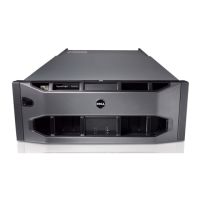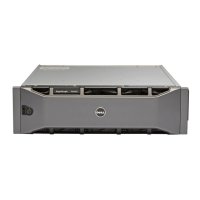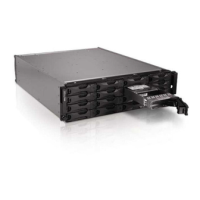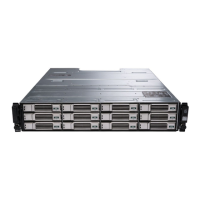Dell EqualLogic PS-M4110 Installation Guide
Chapter 4 Configuring the Array
Table 5: Array Configuration Information
-
Table 6: Group Configuration Information
Unique name that identifies the group (54 or fewer letters, numbers, or hyphens). The
first character must be a letter or number.
Network address for the group. The group IP address is used for group administration
and computer access to data stored in the group. The group IP address must be on the
same subnet as the array's network interfaces.
Password for adding
members to a group
Password required when adding members to a group. The password must have 3 to 16
letters or numbers and is case-sensitive.
Password for the grpad-
min account
Password that will override the factory-set group administration password (grpadmin)
for the grpadmin account. The password must have 3 to 16 letters or numbers and is
case-sensitive.
Required only when creating a new group.
Microsoft service user
name and password
(optional)
CHAP user name and password used to enable Microsoft service (VSS or VDS) access
to the group. The user name must have 3 to 63 alphanumeric characters. The password
must have 12 to 16 alphanumeric characters, and is case-sensitive.
Microsoft services running on a computer must be allowed access to the group in order
to create VSS snapshots in the group or use VDS.
Applicable only when creating a group with the Remote Setup Wizard.
Unique name for the array in the group (63 or fewer letters, numbers, or
hyphens). First character must be a letter or number.
Name of the network interface on the array (eth0) that is connected to a
functioning port on a network switch.
Network address for the array network interface.
Note: Each member must have at least one network interface on the
same subnet as the group IP address.
Address that combines with the IP address to identify the subnet on
which the array network interface resides (default is 255.255.255.0).
Default gateway (optional)
Network address for the device used to connect subnets and forward net
work traffic beyond the local network. A default gateway is needed
only if you want the array network interface to communicate outside the
local network (for example, to allow access to volumes from computers
outside the local network).
Note: The default gateway must be on the same subnet as the array
network interface.
RAID level and spare drive configuration for the array. The actual
number of RAID sets and spare drives depends on the number of drives
in the array.
•
RAID 10 – Striping on top of multiple RAID 1 (mirrored) sets.
•
RAID 50 – Striping on top of multiple RAID 5 (distributed-parity)
sets. Each RAID 5 set uses one drive's worth of space for parity.
•
RAID 5 – Distributed-parity sets.
•
RAID 6 – Multiple dual distributed-parity sets.
•
RAID 6 Accelerated – Only available on XS array models.
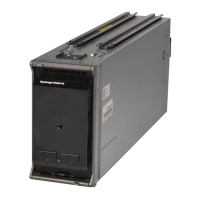
